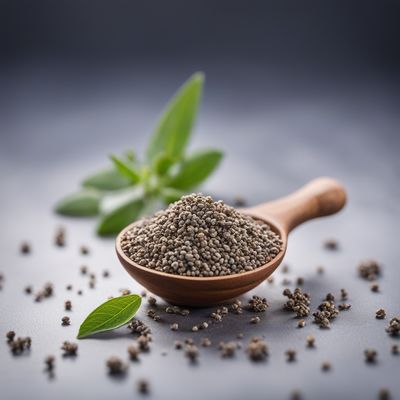
Ingredient
Other seeds (including elsewhere non-listed oilseeds and other seeds)
The Hidden Gems: Exploring the World of Diverse Seeds
Other seeds, such as chia, flax, sesame, and pumpkin seeds, come in various shapes, sizes, and colors. They can range from crunchy to chewy, with flavors that can be nutty, earthy, or slightly sweet. These seeds are often used as toppings, incorporated into baked goods, or enjoyed as a snack.
Origins and history
The cultivation and consumption of seeds have been an integral part of human history, dating back thousands of years. Different seeds have cultural significance in various regions, with some being used for medicinal purposes or religious rituals. Today, seeds are recognized for their nutritional value and versatility in cooking and baking.
Nutritional information
Other seeds are packed with essential nutrients, including healthy fats, fiber, protein, vitamins, and minerals. They are often considered a good source of plant-based protein and omega-3 fatty acids, making them a valuable addition to a balanced diet.
Allergens
Individuals with seed allergies should exercise caution when consuming other seeds, as they may trigger allergic reactions. It is advisable to consult with a healthcare professional if you have any concerns or allergies.
How to select
When selecting other seeds, look for packages that are tightly sealed and free from any signs of moisture or damage. Opt for organic or non-GMO options whenever possible to ensure the highest quality and purity of the seeds.
Storage recommendations
To maintain the freshness and prevent rancidity, store other seeds in airtight containers in a cool, dry place, away from direct sunlight. Refrigeration can help extend their shelf life, particularly in warmer climates.
How to produce
Many seeds can be easily grown at home, either in a garden or in containers. Research the specific requirements of each seed, including sunlight, soil type, and watering needs, to ensure successful cultivation.
Preparation tips
Other seeds can be used in a variety of ways, such as sprinkling them on salads, yogurt, or oatmeal for added crunch and nutrition. They can also be incorporated into baked goods, granola bars, energy balls, or used as a coating for meats or vegetables.
Culinary uses
Other seeds are versatile ingredients that can be used in a wide range of culinary applications. They are commonly used as toppings for salads, cereals, and desserts. Additionally, they can be ground into flours for baking or used as a binding agent in vegan recipes.
Availability
Other seeds are cultivated and available in various regions around the world, depending on the specific seed. Chia seeds are native to Mexico and South America, while sesame seeds are widely cultivated in Asia, Africa, and the Middle East. Flax and pumpkin seeds are commonly found in North America and Europe.

